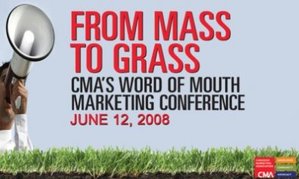Tom Foremski strikes a nerve with his post, PR Firms that Don’t Blog Yet Offer New/Social Media Practices . Tom argues:
… I’ve always said that PR firms cannot claim to know anything about new/social media if they aren’t using it themselves.
One way to check out if a PR firm understands blogging, etc, is to see if they have a blog of their own. Many don’t, or if they do, they post very infrequently, and usually after meetings abut what they will blog about. Yet nearly every PR firm offers a new/social media practice to clients and claims that they understand this medium. This is BS imho.
I think that Tom is absolutely right. Usually, I keep my views to myself on this. But Tom’s post and the comments in response to it really hit home.
So, this is a one-time post about this topic. And before I start, please excuse me if this reads as self-congratulatory. It’s not meant to be.
But it is meant to be a challenge to all those companies that are out there peddling social media advice from the safe distance of observers. People who say "you don’t need to be active in social media to be able to advise on how to do it right."
So, to you folks, I say:
You can’t understand the process of creation unless you’ve created something
I’m a big believer that you need to be a creator of social media to truly understand it.
Social media is online communications in which people switch easily from being audience to author – without the need to know coding (thank you social software!)
How can you really understand social media if you restrict yourself to the audience role? You are really only watching one half of social media. You have to experience the work, agony and joy of creation to really know both sides of social media.
Go to next heading if you want to skip the Thornley Fallis story
Have we put our money, time and effort where my mouth is? You betcha we have. Not only me, but all the people I work with.
Back in ’04, we began experimenting with social media behind the firewall – with both a Wiki to replace our traditional intranet and a blog. (I started out with an MSN Spaces account restricted only to the people in my MSN friends list – social media on training wheels.)
In ’05, I came out in public with the Pro PR blog . Shortly after that, Terry Fallis along with David Jones (then a Thornley Fallis employee) launched the Inside PR podcast .
At the same time, we encouraged all of the people in the company to get involved in blogging (that was pre-Facebook, pre-Twitter). And as people began to post, we redeveloped the Thornley Fallis Website so that the most recent posts from each of our employee blogs are front and centre. In this way, we give visitors a chance to know our company through the thoughts of the people who work here, not through "brochureware".
Today, if people come to our Website, they can read the views and insights that our team shares each an every day through: Michael O’Connor Clarke’s Uninstalled , Michael Seaton’s The Client Side , Bob LeDrew’s FlackLife , John Sobol’s The Talking Shop and the collectively authored blogs of the women in our Toronto office, PRGirlz , the folks in our Ottawa office, Capital PR , and our 76design team, shift+control .
Last year, Terry Fallis self-published his novel, the Best Laid Plans, and promoted it by reading it in a podcast series on his blog. Not only did he explore a whole new model of publishing, but his novel was awarded the Leacock Award for Humour . (And now he has a traditional publishing deal which will see his novel published and hit bookstores in the autumn season. Way to go, Terry!)
We also created some apps – FriendsRoll and TopLinks – which we hope will help revitalize the blogroll and bring a greater sense of community to blogs.
And along the way, we’ve played with all the Shiny New Objects. We’ve learned which are simply really neat technology and which have real utility. And we actively participate and generate content in those that we find useful. Twitter, Facebook, Dopplr, del.icio.us and many more.
Oh yes. We also took our social media involvement back into the real world. We’ve helped to organize the Third Tuesday social media meetups to provide a place where we can meet in the real world with others who share our passions for social media.
Bottom Line: Social media authorship is the entry fee for social media credibility.
Where does that leave us? Well, when someone asks me a question about social media, I never have to preface my response with "They say…" or "They believe…" I can always say, "In my experience, I have discovered…" And that gives me real confidence that the advice I am providing is solid.
I listen to people who have never posted to a blog pronouncing their views and presenting themselves as experts in social media. And usually I politely keep my opinion to myself. But I’ll say it here. Very few of the people who aren’t active creators of social media really understand the nuances of the social media culture.
OK. That’s the end of my rant. What do you think?


